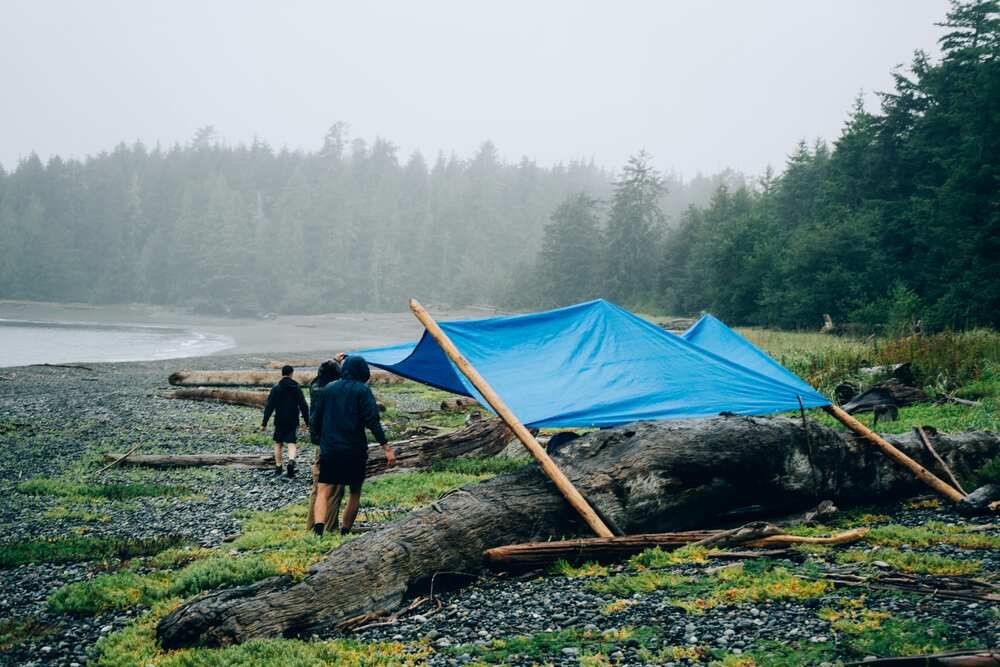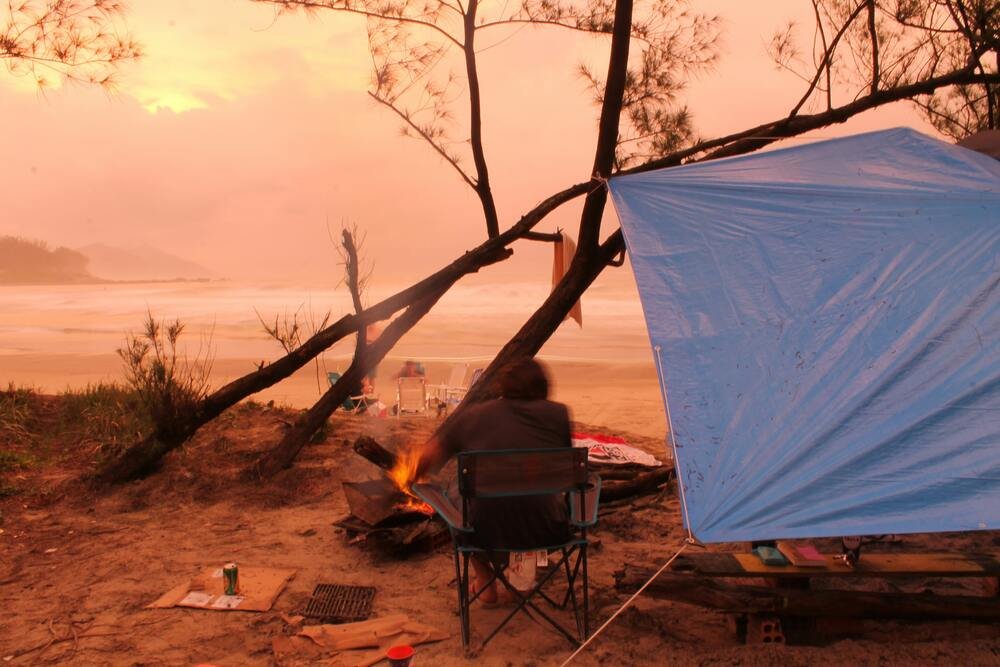Minimalist Camping
Feeling weighed down by your camping gear? Spending too much time packing and unpacking? It might be time to embrace minimalist camping.
The idea is simple: keep your pack under 12 pounds. While it may sound daunting at first, it’s a great way to simplify your adventures and focus on the essentials.
Don’t worry, you don’t have to go all-in right away. There are simple steps you can take to gradually adopt a more minimalist approach. This will save you time, money, and stress, allowing you to truly relax and enjoy nature on your next camping trip.
Essential Gear for Minimalist Camping
- The Right Pack: Choose a backpack that suits your needs and packing style. Lightweight, frameless packs are ideal for minimalists who prioritize weight reduction, while framed backpacks offer better structure and stability for longer trips. Ensure your pack has compartments for organization and exterior attachment points for frequently used items.
- Multipurpose Gear: Invest in gear that serves multiple purposes. A multi-tool can replace a whole toolbox, while a tarp can act as a groundsheet, shelter, and rain cover. Trekking poles provide stability on hikes and can double as tent poles.
- Quality Over Quantity: Prioritize high-quality gear over having multiple items. Quality gear is typically lighter, more durable, and offers better performance, making it a worthwhile investment for minimalist campers.
- Water Filter: Don’t weigh yourself down with bottled water. Instead, pack a portable water filter or purification tablets. This allows you to refill your water bottle from natural sources, saving both weight and space.
- Nutrient-Dense Snacks: Choose lightweight, high-energy snacks like nuts and jerky. These provide essential nutrients and calories without the need for heavy cooking gear.
- Functional Clothing: Wear clothing with multiple pockets for extra storage. Layering is also key to minimize the number of items you need to pack. For short trips, consider wearing your hiking clothes to your destination and packing only a change of socks and underwear.
- Streamlined Toiletries: Embrace the “get a little dirty” aspect of camping. Pack only essential toiletries like wet wipes, deodorant, a toothbrush, and toothpaste. Consider multipurpose products like shampoo bars or hair cleanser/soap combos.
- Shelter Options: In warm weather, a tarp is an excellent minimalist shelter option. It’s lightweight, versatile, and easy to set up. For colder conditions or those who prefer a tent, choose a lightweight model made from high-performance materials.
- Low-Tech Entertainment: Leave the electronics at home and opt for low-tech entertainment like books, cards, or simple games. This helps you disconnect from technology and reconnect with nature.
Minimalist Camping for Families
Minimalist camping can be a wonderful experience for families as well. It allows you to focus on spending quality time together and bonding with nature. Plan engaging activities like scavenger hunts, birdwatching, or storytelling around the campfire. Remember, minimalist camping is about simplifying, so ditch the gadgets and embrace the natural world. Minimalist family camping is possible with a little planning.

Minimalist Camping Checklist
Shelter:
- Tarp (for warm weather) OR
- Lightweight tent (for colder conditions or personal preference)
- Paracord (for tarp setup)
- Sleeping bag (appropriate for weather conditions)
- Sleeping pad (optional, for added comfort)
Essentials:
- Backpack (with compartments and attachment points)
- Multi-tool (knife, pliers, screwdriver, etc.)
- Water filter or purification tablets
- Headlamp or flashlight
- First-aid kit
Cooking & Food:
- Lightweight camping stove (if cooking)
- Pot or pan (multipurpose if possible)
- Utensils (spork, or fork and spoon)
- Cup/bowl (can be combined)
- High-energy, nutrient-dense snacks (nuts, jerky, dried fruit)
Clothing:
- Moisture-wicking base layers (top and bottom)
- Insulating mid-layer (fleece or down jacket)
- Waterproof outer layer (rain jacket and pants)
- Hiking pants or shorts
- Hiking boots or shoes
- Socks (1-2 pairs)
- Underwear (1-2 pairs)
- Hat (for sun or warmth)
- Gloves (if needed)
Toiletries:
- Wet wipes
- Deodorant
- Toothbrush and toothpaste
- Shampoo bar or multipurpose soap (optional)
Entertainment (Optional):
- Book
- Deck of cards
- Small game
Additional Tips:
- Wear your hiking clothes to the campsite to save space.
- Bring a reusable water bottle to fill up at your water source.
- Consider a headlamp with a red light setting to preserve night vision.
- Pack a small trash bag for Leave No Trace principles.
- Research and plan your meals in advance to ensure you have enough food.
Remember: This is just a starting point. Customize your checklist based on your personal needs, the length of your trip, and the weather conditions. The key is to pack light and prioritize the essentials so you can focus on enjoying your outdoor adventure!
Camping is about escaping the everyday and enjoying nature’s simplicity. This year, rediscover that joy by focusing on experiences, not accumulating gear. Try minimalist camping for a refreshing change of pace. Take less stuff and amplify your fun. You’ll love camping even more!
Minimalist Camping FAQ
1. What is minimalist camping?
Minimalist camping is a style of camping that emphasizes packing light and only bringing essential items. The goal is to reduce the amount of gear and supplies you carry, making the camping experience simpler and less stressful. This approach allows campers to focus more on enjoying nature and less on managing equipment. Minimalist camping often involves using multipurpose gear, packing nutrient-dense food, and opting for lightweight and compact items.
2. How can I reduce the weight of my camping pack?
To reduce the weight of your camping pack, consider the following tips:
- Choose quality over quantity: Invest in high-quality, lightweight gear that is durable and multifunctional.
- Use multipurpose items: Opt for gear that serves multiple functions, such as a multitool or a tarp that can be used as both ground cover and shelter.
- Pack travel-sized personal items: Use small containers for toiletries and other personal items to save space and weight.
- Layer clothing: Bring versatile clothing that can be layered for different weather conditions, reducing the number of items you need to pack.
- Plan meals carefully: Bring lightweight, easy-to-prepare foods that don’t require heavy cooking equipment.
3. How do I find the right campsite for minimalist camping?
When choosing a campsite for minimalist camping, consider the following:
- Research amenities: Check if the campsite provides potable water, dishwashing stations, electricity, and toilets. This can help you decide what to bring and what to leave behind.
- Proximity to water sources: Choose a site near a clean water source so you can use a portable water filter instead of carrying large amounts of water.
- Weather conditions: Be aware of the weather forecast and choose a site that offers natural protection from the elements, such as trees or rock formations.
- Accessibility: Select a campsite that is easy to reach and doesn’t require carrying gear over long distances, especially if you are new to minimalist camping.
4. What are some common mistakes to avoid in minimalist camping?
Common mistakes to avoid in minimalist camping include:
- Overpacking: Resist the urge to bring items “just in case.” Stick to your minimalist checklist and evaluate needs versus wants.
- Ignoring quality: Don’t compromise on the quality of your gear. High-quality items may be more expensive but are often lighter, more durable, and multifunctional.
- Not testing gear: Before your trip, test your gear at home to ensure it works properly and that you know how to use it. This can prevent issues in the field.
- Neglecting safety: Always bring a basic first aid kit and know how to use it. Safety should never be compromised, even when packing light.
- Poor planning: Failing to research your campsite and weather conditions can lead to unnecessary challenges. Proper planning helps you pack efficiently and be prepared for your trip.
By following these guidelines, you can enjoy a stress-free and enjoyable minimalist camping experience.

